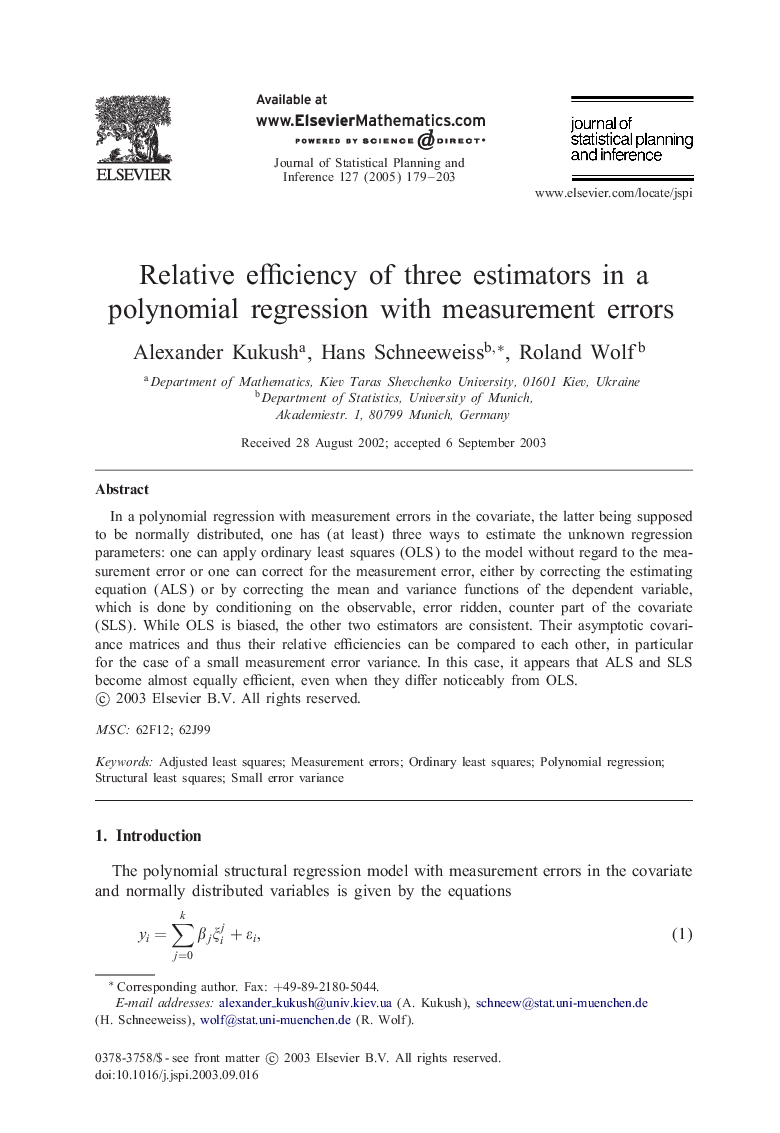| Article ID | Journal | Published Year | Pages | File Type |
|---|---|---|---|---|
| 9741822 | Journal of Statistical Planning and Inference | 2005 | 25 Pages |
Abstract
In a polynomial regression with measurement errors in the covariate, the latter being supposed to be normally distributed, one has (at least) three ways to estimate the unknown regression parameters: one can apply ordinary least squares (OLS) to the model without regard to the measurement error or one can correct for the measurement error, either by correcting the estimating equation (ALS) or by correcting the mean and variance functions of the dependent variable, which is done by conditioning on the observable, error ridden, counter part of the covariate (SLS). While OLS is biased, the other two estimators are consistent. Their asymptotic covariance matrices and thus their relative efficiencies can be compared to each other, in particular for the case of a small measurement error variance. In this case, it appears that ALS and SLS become almost equally efficient, even when they differ noticeably from OLS.
Related Topics
Physical Sciences and Engineering
Mathematics
Applied Mathematics
Authors
Alexander Kukush, Hans Schneeweiss, Roland Wolf,
